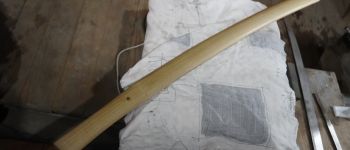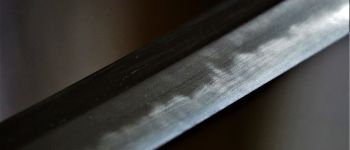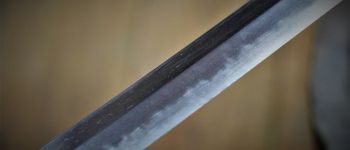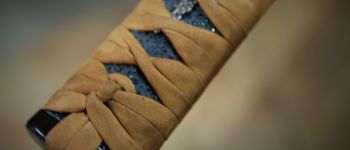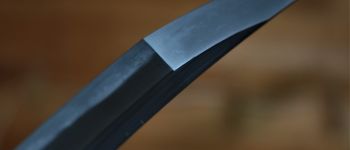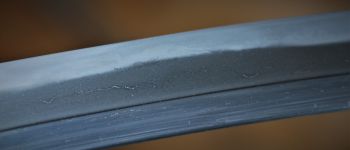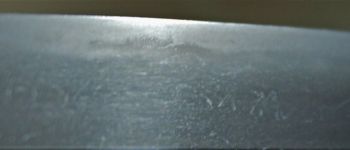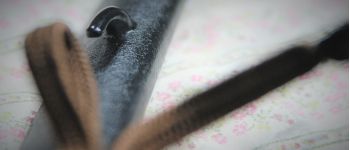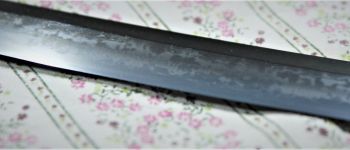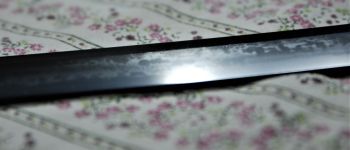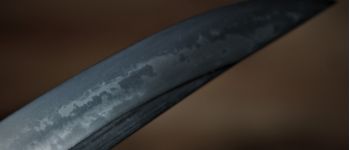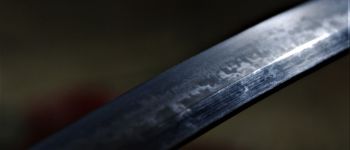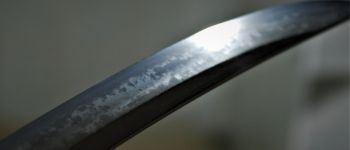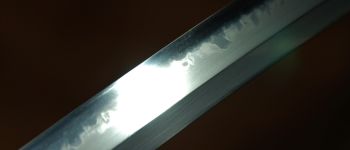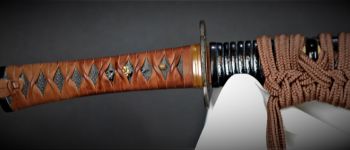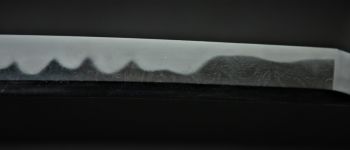Wakizashi

Wakizashi in Bizen Ichimonji style
Koshirae. Double silver habaki, shirasaya (honoki/magnolia)

O-wakizashi, tensho koshirae
Koshirae tensho style, tsuba mokko gata with pine engraving. Menuki pine. Leather braid.
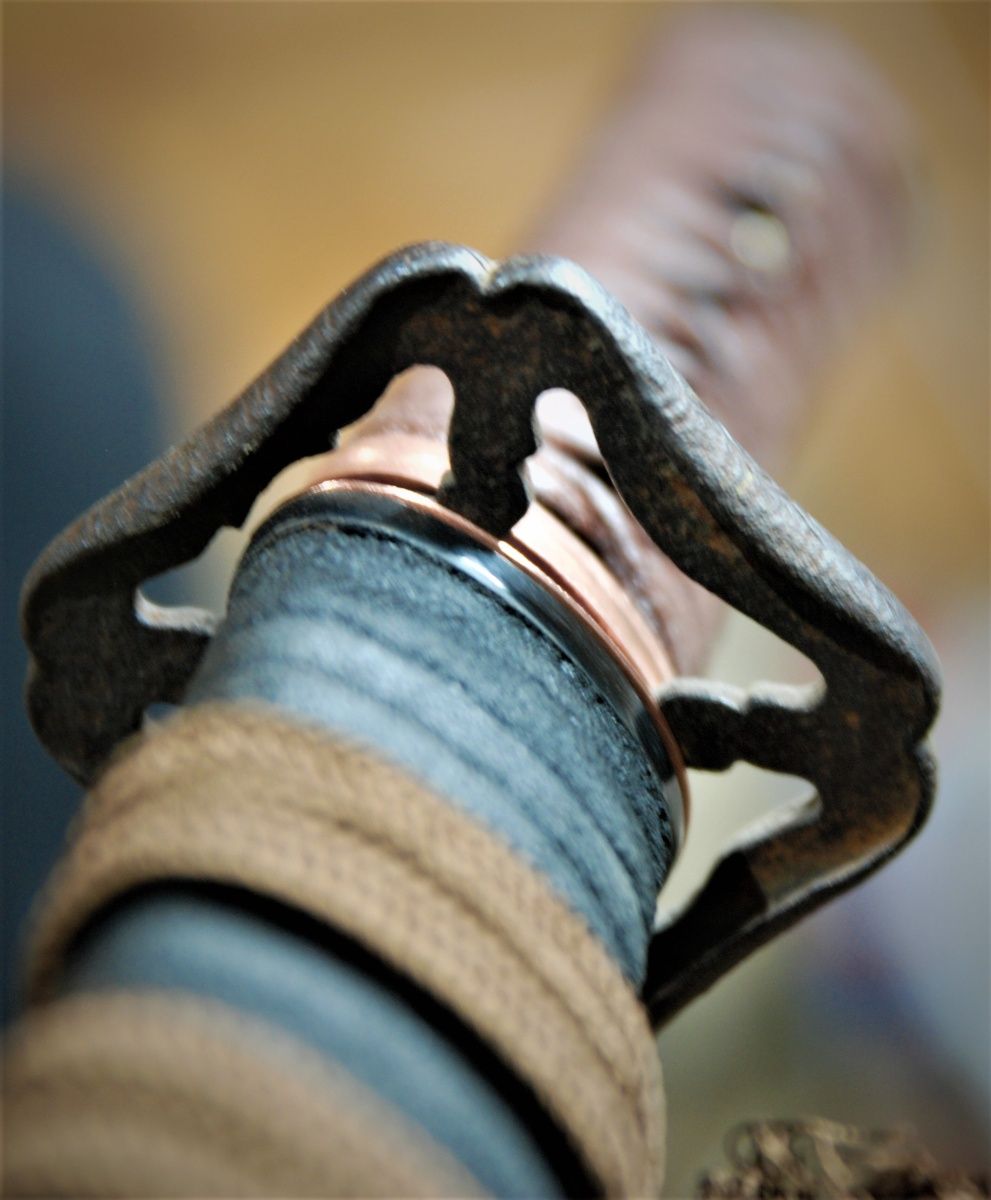
Wakizashi shobu zukuri
The sword's Sugata is a copy of a Kamakura-era wakizashi blade. Wakizashi swords were rarely made during this period. The original blade that was the model has a low hamon suguha. In this case, at the request of the sword owner, I hardened the blade without clay. The result is a blade with superbly rich metallurgy. The hamon hoji transitions into hitatsura mixed with extremely pronounced nie utsuri. In places, the utsuri is mixed with tobiyaki and it is difficult to determine the boundaries of each effect. Hada is itame, mokume. The polishing is in the traditional sashikomi style. The length of the blade is about 55cm, with a distinctive sori. Yori mune.
Koshirae in the wartime style of the Muromachi period. Kizami saya, cotton braid is varnished. The steel moko tsuba with a distinctively flared rim is an antique original. Habaki copper. Kashira and components on the saya are made of buffalo horn. The sword is massive, with a broad blade.
Such a sword was not usually worn together with a katana longsword. Rather, it was a separately carried weapon replacing the katana. The powerful blade with its distinctive dynamics was capable of being very destructive in the hands of a skilled swordsman. The range of such a sword held with one hand was the same as that of a katana held with two hands.

Wakizashi in the style of Ichimonji school
Nagasa approx. 55 cm. Modern Ichimonji style. Hamon is clay coded choji.
Katsushi tsuba corresponds to the style of the Edo period. It is a little thicker than their Muromachi period counterparts. Edo Tensho style set. Wrap of blue tsuka ito. Ishime lacquering the scabbard.
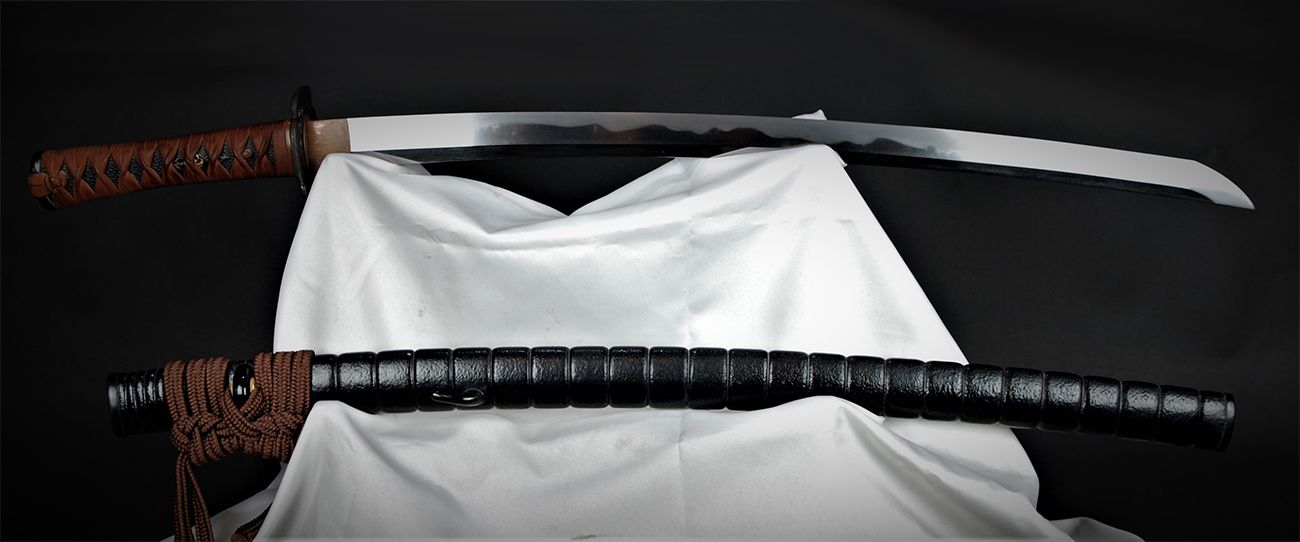
O-wakizashi, Tensho koshirae, reproduction of Soshu style
O-wakizashi, a reproduction of Soshu style. Nagasa 60 cm, o-kissaki. Hon san mai construction. Hamon midare choji, nie, sunagashi, kinsuji. O hada mokume, itame. Koshirae Tensho, kizami saya.

Wakizashi Ichimonji School style - Tensho koshirae, Momoyama period



